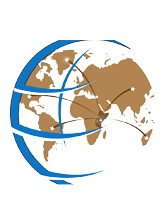Journal of the Language Association of Eastern Africa
Abstract
Within the next century as many as half of the world’s seven thousand languages, are poised to become extinct at an alarmingly accelerated rate (Evans 2010). This correlates to a loss of knowledge, collective and individual identities, and social values. This loss is not only one of the most serious issues facing humanity today, but also it is representative of an unspeakable loss of information invaluable to humanity. This is so because these languages are among our few sources of evidence for understanding human history and each of these languages embodies unique local knowledge of the cultures and natural systems in the region in which they are spoken. This paper focuses on identifying and describing the characteristics of the Sengwer language in terms of its sound system as a contribution towards its preservation as an endangered language. The Sengwer language is an indigenous Nilotic language and has not previously received much linguistic attention. It belongs to the Kalenjin family of languages and is now on the brink of extinction. No research has been carried out in the linguistic domain regarding the sounds of this hidden gem that is critically endangered. A single speaker was used to elicit linguistic data because it has to be borne in mind that very few native speakers of the language exist. The Swadesh word list was used for this purpose because Sengwer orthography has not yet been developed and so it would not have been possible to compile a word list. Results indicate that the Sengwer phonemic inventory consists of five short vowels, five long ones, and six diphthongs. It also exhibits nineteen consonants in its inventory with tones that are used to mark both lexical and grammatical distinctions. Five syllable structure types are also noted and that the language tends to avoid marginal consonant clusters. This paper, therefore, intends to describe these aspects of this language that is poorly understood.
Recommended Citation
Nandako, Jamas
(2022)
"Endangered Languages: A Sketch of the Sengwer Sound System,"
Journal of the Language Association of Eastern Africa:
Vol. 1:
No.
1, Article 7.
Available at:
https://scholarship.claremont.edu/jlaea/vol1/iss1/7









